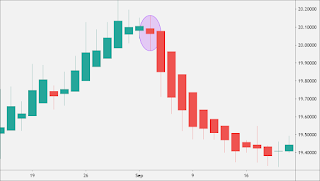Understanding and Profitably Using Fibonacci Retracement in Technical Analysis

by: Ivan Cavric Fibonacci retracement is a popular technical analysis tool that uses horizontal lines to indicate areas of support or resistance at the key Fibonacci levels before the price continues in the original direction. These levels are derived from the Fibonacci sequence and are commonly used in conjunction with trend lines to find entry and exit points in the market. The Fibonacci sequence is a series of numbers in which each number is the sum of the two preceding numbers, starting with 0 and 1. The key Fibonacci levels derived from this sequence are 23.6%, 38.2%, 50%, 61.8%, and 100%. To use Fibonacci retracement, you need to first identify the direction of the trend. This can be done using trend lines, moving averages, or other technical indicators. Once you have identified the trend, you can then draw a Fibonacci retracement from the high to the low of the trend. The horizontal lines at the key Fibonacci levels will then act as potential areas of support or resistance. For...

